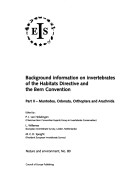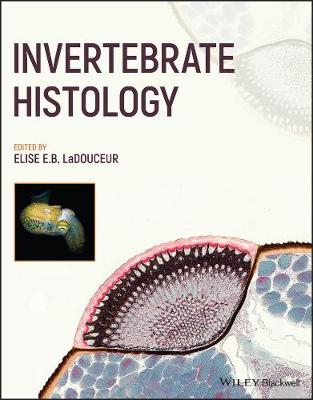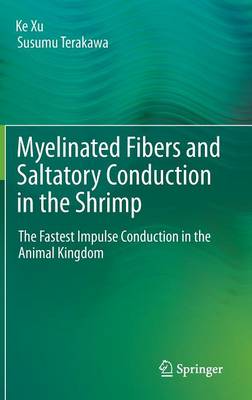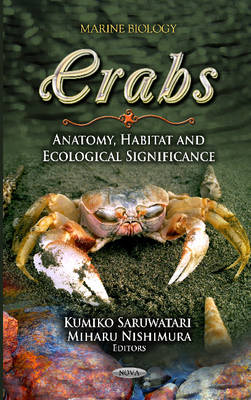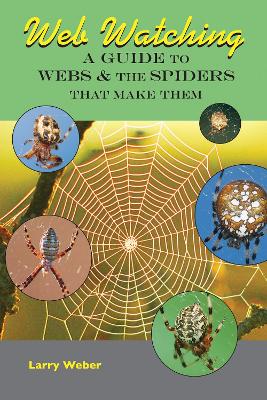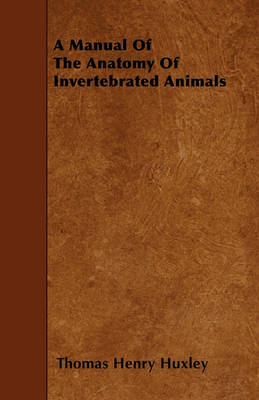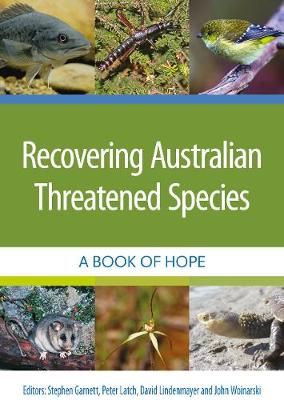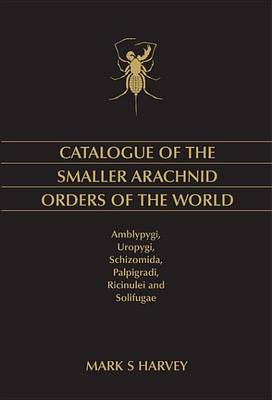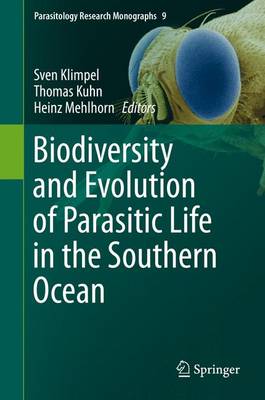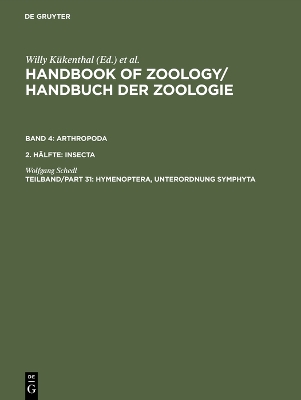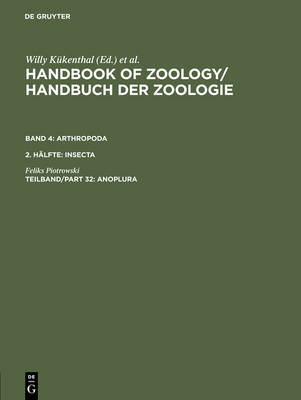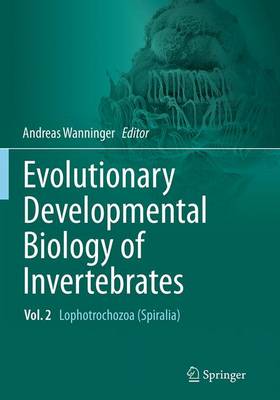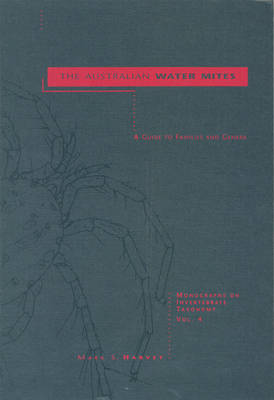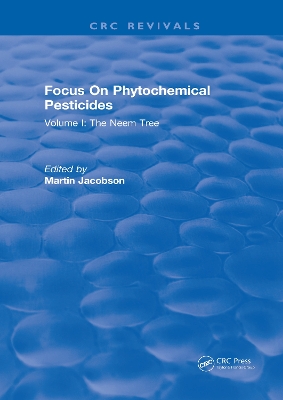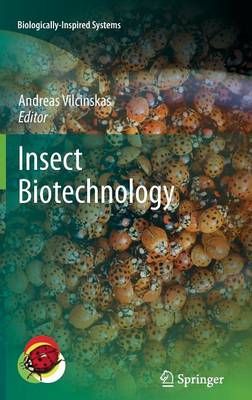The first comprehensive reference to invertebrate histology Invertebrate Histology is a groundbreaking text that offers a comprehensive review of histology in invertebrates. Designed for use by anyone studying, diagnosing, or researching invertebrates, the book covers all major taxonomic groups with details of the histologic features, with color photographs and drawings that clearly demonstrate gross anatomy and histology. The authors, who are each experts in the histology of their respective t...
Aid to the Identification of Insects (Volume 2)
by Charles Owen Waterhouse
Moths are often thought of as the ugly cousins of butterflies, yet their colours can be just as remarkable and, with over 20,000 species in Australia, their biology and lifestyles are far more diverse. With striking colour photographs of live moths in their natural habitat, this guide illustrates all the major moth families in Australia, including some rarely seen species. It provides many curious facts about the unusual aspects of moth biology, including details on day-flying species, camouflag...
Myelinated Fibers and Saltatory Conduction in the Shrimp
by Ke Xu and Susumu Terakawa
In 1961, neurobiologists found that the conduction velocity of the nerve impulse in the giant nerve fiber of the Penaeus shrimp abdominal nerve cord was over 200 m/s, the highest speed of information transmission ever observed in the animal kingdom. The peculiar myelin sheath with its unique nodal structure and the electrical properties of the nerve fibers of the shrimp have continued to be investigated for a quarter of century and are now fully described in this book. The investigation dispels...
Crabs
This book presents topical research in the study of the anatomy, habitat and ecological significance of crabs. Topics discussed in this compilation include the different species of crabs and viral susceptibility; distribution and habitat of cold water crab species on the Grand Bank of Newfoundland; behavioural differences in fiddler crabs; cellular cadmium transport in gills and hepatopancreas of the mangrove crab and invasive swimming crabs.
Your Guide to Spiders and Their Webs We see webs everywhere, but do you know which spider made each web? And for what purpose? This user-friendly guide by award-winning science teacher and lifelong spider watcher Larry Weber helps you untangle the mystery of spider webs and demystify the many purposes of silk. Did you know that spiders have up to seven silk glands and that each produces a different type of silk? The complex process of building a giant orb web is explained in detail. Over 40 s...
A Manual Of The Anatomy Of Invertebrated Animals
by Thomas Henry Huxley
Complete, handzame veldgids van de land- en zoetwaterslakken en -schelpen van Nederland. Beschrijft ruim 200 soorten, met informatie over verschijningsvorm, habitat, voorkomen, verspreiding en ecologie; Met toegankelijke determinatietabel voor in het veld; Talloze kleurenfoto's en illustraties; Handige tips voor waarneming en determinatie, verzamelen en beheren.
Acid-Base Balance and Nitrogen Excretion in Invertebrates
This textbook provides a comprehensive overview on the diverse strategies invertebrate animals have developed for nitrogen excretion and maintenance of acid-base balance and summarizes the most recent findings in the field, obtained by state-of-the-art methodology. A broad range of terrestrial, freshwater and marine invertebrate groups are covered, including crustaceans, cephalopods, insects and worms. In addition the impact of current and future changes in ocean acidification on marine inverte...
Recovering Australian Threatened Species
Australia's nature is exceptional, wonderful and important. But much has been lost, and the ongoingexistence of many species now hangs by a thread. Against a relentless tide of threats to our biodiversity,many Australians, and government and non-government agencies, have devoted themselves to thechallenge of conserving and recovering plant and animal species that now need our help to survive. Thisdedication has been rewarded with some outstanding and inspiring successes: of extinctions averted,...
This authoritative catalogue will greatly assist readers in finding the correct taxonomic name for any given family, genus or species within each of the six arachnid orders treated. It contains a valuable summary of bibliographic information, enabling readers to access the worldwide literature for these smaller orders. The catalogue presents full bibliographic data on each of the taxa named thus far, treating over 1600 species. It contains the most current classification system for each group, s...
Biodiversity and Evolution of Parasitic Life in the Southern Ocean (Parasitology Research Monographs, #9)
The Southern Oceans including Antarctic regions are peculiar and very sensitive water biotopes, where animal life and species interrelations are only poorly investigated. Especially the influence of parasites on their host species needs intensive consideration in times of global warming and worldwide pollution. Both factors may influence the finely balanced interrelationships between parasites and endangered hosts especially in specialized regions such as Antarctica. Before this background the p...
Coastal Marine Zooplankton:A Practical Manual for Students
by C D Todd and M. S. Laverack
This manual provides an original, photographic guide to representative forms of the major marine zoological groups, from medusae and comb jellies to larval fish and squid, and each picture is accompanied by appropriate systematics and taxonomic details. The exclusive use of live and active organisms as subjects for illustration provides a unique visual perspective, and this together with details of taxonomy, morphology, development, and behavior creates a vivid and essential text for all those i...
Süßwasserfauna von Mitteleuropa, Bd. 7/2-2 Chelicerata (Susswasserfauna von Mitteleuropa)
Chelicerata are a basically terrestrial group of invertebrates, including many clades whose representatives have never found an evolutionary way to aquatic live. An exception is made by some spiders and the highly diverse aquatic mites which in inland water habitats are represented by members of numerous different clades having evolved an aquatic or amphibious lifestyle along various evolutionary pathways. For the first time in limnofaunistic bibliography, the present taxonomic knowledge about t...
Neotropical Insect Galls
The book brings to light the most recent findings on the biogeography, biodiversity, host plant induction and natural history of gall inducing insects in the Neotropical region. We attempt to summarize the work done so far in the region, promote several syntheses on many aspects such as host induction, host specialization, distribution among the several vegetation types and zones, the origin of super hosts and the mechanisms leading to geographical patterns in their distribution. Furthermore, th...
Spezielle Zoologie. Teil 1: Einzeller und Wirbellose Tiere (Sav Biologie)
Diese 3. Auflage des 1. Teils der „Speziellen Zoologie“ wird weiterhin das maßgebende Lehrbuch der Systematischen Zoologie für Studierende der Biowissenschaften sein. Während die Systematisierung der eukaryotischen Einzeller umfangreiche Umstellungen erforderlich gemacht hat, erreicht die Großgliederung der Metazoa einen hohen Grad an Verlässlichkeit. Die wichtigsten Neuerungen sind die Auftrennung der Protostomia in die Spiralia (=Lophotrochozoa) und Ecdysozoa, die Herausnahme der Acoelomorpha...
Hymenoptera, Unterordnung Symphyta (Handbuch Der Zoologie, #4)
by Wolfgang Schedl
Covering 100 years of zoological research, the Handbook of Zoology represents a vast store of knowledge. Handbook of Zoology provides an in-depth treatment of the entire animal kingdom covering both invertebrates and vertebrates. It publishes comprehensive overviews on animal systematics and morphology and covers extensively further aspects like physiology, behavior, ecology and applied zoological research. Although our knowledge regarding many taxonomic groups has grown enormously over the la...
Evolutionary Developmental Biology of Invertebrates 2
This multi-author, six-volume work summarizes our current knowledge on the developmental biology of all major invertebrate animal phyla. The main aspects of cleavage, embryogenesis, organogenesis and gene expression are discussed in an evolutionary framework. Each chapter presents an in-depth yet concise overview of both classical and recent literature, supplemented by numerous color illustrations and micrographs of a given animal group. The largely taxon-based chapters are supplemented by essay...
Sawyer, a well-known leech specialist, surveys the most recent research on this biologically and medically important group of animals. Useful to neurobiologists, molecular biologists, zoologists, and ecologists, these volumes include coverage of the leech's increasingly important role in neurobiological and neurophysiological studies.
First published in 1989. Presents research and findings from a series of conferences in the 1980s on the use of plants in pesticides for insect control.
Insect Biotechnology (Biologically-Inspired Systems, #2)
The book provides a fascinating overview about current and sophisticated developments in applied entomology that are powered by molecular biology and that can be summarized under a novel term: insect biotechnology. By analogy with the application of powerful molecular biological tools in medicine (red biotechnology), plant protection (green biotechnology) and industrial processing (white biotechnology), insect biotechnology (yellow biotechnology) provides novel tools and strategies for human we...
